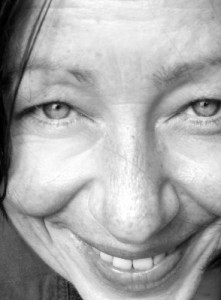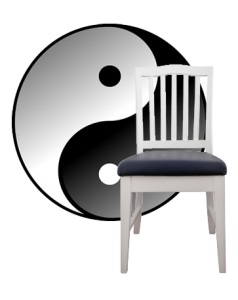![]() “In Taiji the root comes becomes we cultivate mental sinking. You always send awareness into the ground through the feet then you should have the root we develop in Taiji”.
“In Taiji the root comes becomes we cultivate mental sinking. You always send awareness into the ground through the feet then you should have the root we develop in Taiji”.
Wee Kee Jin
Chair Chi: ‘This is Rubbish’
 As we started our Chair Chi session, she looked at me fiercely and muttered to the resident next to her ‘this is rubbish, I’m not doing it’.
As we started our Chair Chi session, she looked at me fiercely and muttered to the resident next to her ‘this is rubbish, I’m not doing it’.
I ignored her comment and continued on with the session using my peripheral vision to occasionally check on her demeanor.
For most of the session it didn’t change, she just glared at me and occassionaly fell asleep.
Then it happened.
In the last five minutes of the one hour session she woke up, looked at me and then started to move her arms in time with the movement I was demonstrating.
And to top it off she even smiled!
That was my favourite moment of the day and it made it all worthwhile. Earlier in the day I’d delivered two chair chi workshops at another aged care centre in the morning, had a short lunch and was tired.
Just goes to show you that chair chi ‘rubbish’ can turn into a treasure if you are patient and keep trying.
Footnote: The image here is a generic one and not that of the resident mentioned in this post.
Mildly Extreme Yang Chair Chi
 In my previous post I mentioned an extreme form of interruption while running an aged care Chair Chi session recently.
In my previous post I mentioned an extreme form of interruption while running an aged care Chair Chi session recently.
Here are some mild extreme yang interruptions I’ve had since runnning Chair Chi sessions for low care and high care residents at aged care centres. Thankfully, the interruptions have been in the minority of the 350+ workshops I have delivered.
- Opera music played over the PA system
- A visitor with a large dog, walked through our circle of residents, unannounced, and not asking permission, sat down and just watched
- A fire alarm sounding as we were practicing our calming abdominal breathing technique (an appropriate time to so)
- People in the background conducting loud conversations during a session
- Squeaky trolleys reverberating through corridors
- A duck sound coming through a PA system as a prelude to an announcement
- Staff preparing lunch while running a chair chi session in a dining room
- Workmen drilling away in a corridor
It certainly has given me the opportunity to practice what I preach – stay focused and remain calm!
Extreme Yang Chair Chi
 I run regular Chair Chi sessions for various aged care centres and the other day I had an ‘extreme chair chi’ experience.
I run regular Chair Chi sessions for various aged care centres and the other day I had an ‘extreme chair chi’ experience.
The residents were seated in a circle as I walked into the room. I sat down and welcomed them to our Chair Chi session with the usual banter.
Then it started.
An industrial vacuum cleaner nearby roared to life and drowned out my voice, distracting the elderly residents, and making it very difficult to run an exercise and meditative session.
All I could do was pace myself as my voice couldn’t compete with that extreme noise. I tried to get the residents to focus on me as much as possible but after 45 minutes of noise (only a 10 minute silence inbetween) we decided to wrap up the scheduled 60 minute session. The co-ordinator came over and whispered in my year suggesting it was okay to finish early.
Some days one has to deal with extreme Yang interruptions or end up sucked into the void.
Tai Chi: Square Chair
![]() Here’s a handy tip for beginners who practise a Tai Chi form.
Here’s a handy tip for beginners who practise a Tai Chi form.
By the way, the term ‘square’ refers to the stop start method of learning a Tai Chi form.
Whenever you are in an upright posture, as you move throughout the form, imagine you are sitting on a high chair (feet flat on the floor). Make sure the knees don’t go over the toes when you ‘sit on the chair’.
This square chair method will help you align your body correctly; helps avoid the common problems of rolling your hips forward and sticking your tailbone out.
Here are some examples in the Wu Style form where you can practice ‘square chair’ in the form:
- Beginning
- Seven Stars
- Cross Hands
- Fan Through the Back
- Pat the Horse High
- Golden Cockerel Stands on One Leg
I thought of this technique yesterday when I was practising the round form (continous flow) and imagined sitting on a high chair for a very brief moment as I moved into upright postures.
However, if you are a beginner, square up your form with ‘square chair’ Tai Chi.
- « Previous Page
- 1
- …
- 10
- 11
- 12
- 13
- 14
- …
- 79
- Next Page »